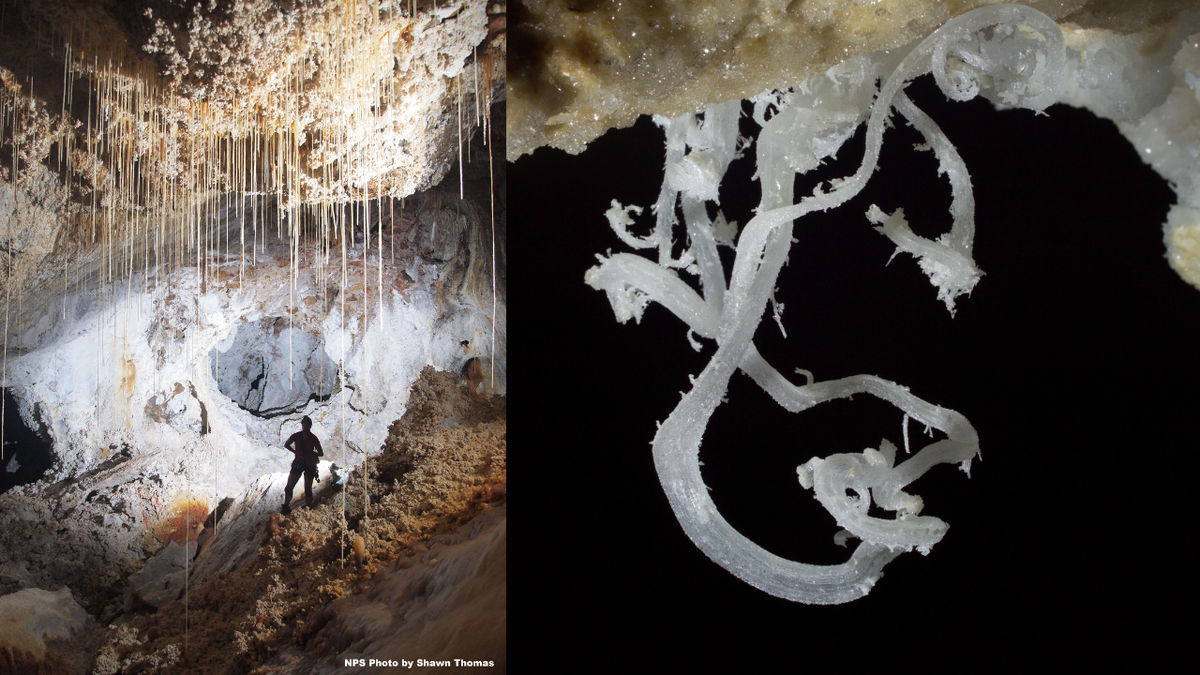QUICK FACTS
Name: Carlsbad Caverns
Location: New Mexico
Coordinates: 32.13721555956437, -104.5427096972203
Why it’s incredible: The caverns hold astonishing limestone formations and gypsum crystals.
Carlsbad Caverns is a maze of underground caves born from an ancient tropical reef. The caverns house North America’s largest cave chamber, “the Big Room,” which boasts a floor area of 8.2 acres — equivalent to more than six football fields.
The caverns sit within the Guadalupe Mountains on the border between New Mexico and Texas. More than 300 caves exist in this region, 119 of which are located within the boundaries of Carlsbad Caverns National Park. The cave system is so extensive and intricate it is frequently compared to Swiss cheese, according to the National Park Service (NPS).
Related: Cave of Crystals: The deadly cavern in Mexico dubbed ‘the Sistine Chapel of crystals’
Carlsbad Caverns first began to take shape 265 million years ago, when what is now southeastern New Mexico sat on the shores of a shallow inland sea. The tropical climate at the time led to the formation of large reefs made of sponges and algae.
A shift in the climate toward the end of the Permian period (299 million to 251 million years ago) then dried up this sea, and as the reefs emerged from the water, sediment gradually piled up and buried them.
A period of geologic uplift that started around 20 million years ago forced the reefs and their thick sediment blanket upward, giving rise to the Guadalupe Mountains. The elevation of around 8,750 feet (2,667 meters) exposed the crust to high winds and other erosion factors that wore away the sediment, leaving behind the ancient reef. Evidence of the reef’s maritime history is still visible in the Carlsbad Caverns today in the form of fossilized ammonites, snails, nautiloids, bivalves and trilobites.
The caverns themselves formed roughly 12 million years ago, as a result of erosion within the reef, which is mostly made of limestone. Unlike most caves in the world, which typically form from the top down, the Carlsbad Caverns opened from the bottom up via sulfuric acid dissolution.
Sulfuric acid is the product of sulfur, oxygen and water. The Guadalupe Mountains are located near oil fields that discharged sulfur into the groundwater, creating a giant and aggressive “acid bath” around the limestone, according to NPS.
Leftover minerals from this acid bath gave rise to gypsum crystals, which formed giant blocks and delicate “flowers” in the caverns. Rain and snowmelt that seeped into the caves during the last ice age also went to work on the limestone, creating stalactites, stalagmites and impressive columns inside the chambers. There are several other types of cave formations in the Carlsbad Caverns — including soda straws, draperies, lily pads, cave pearls and cave popcorn.
In modern times, few of these limestone features are still wet enough to keep growing, given the current arid climate of the region surrounding the caverns.


